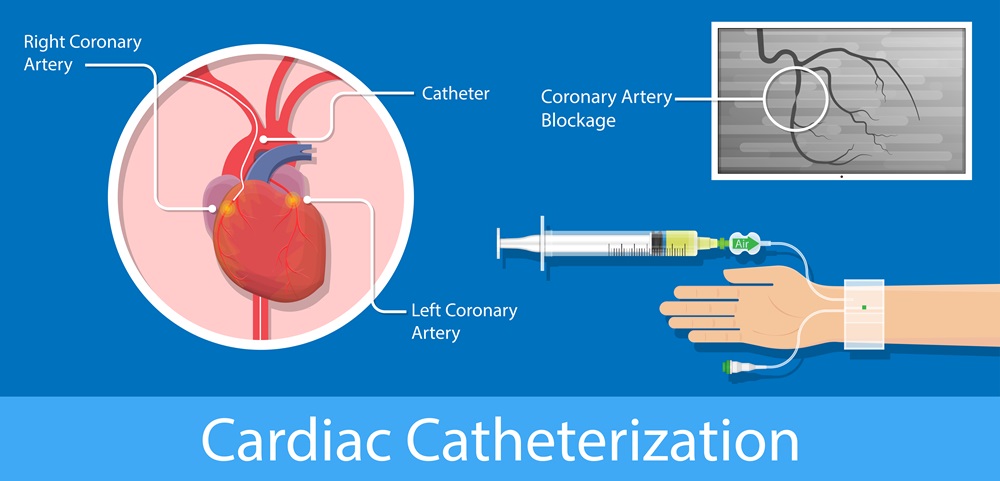Cardiovascular health is a prime aspect of overall well-being, and medical advancements have provided us with various diagnostic and treatment options for heart-related issues. Two commonly mentioned procedures in cardiology are angiography and angioplasty. While these terms may sound similar, they solve different problems in cardiac care. This comprehensive guide will explore the differences between angiography and angioplasty, their purposes, procedures, and when each is recommended.

Angiography, also known as an angiogram, is a diagnostic imaging procedure that helps visualize the blood vessels, particularly the arteries, in various body parts. In cardiac care, coronary angiography examines the blood vessels supplying the heart muscle.
Angiography is not limited to cardiac applications. It can study blood vessels in other parts of the body, such as the brain (cerebral angiography), kidneys (renal angiography), or legs (peripheral angiography).
Angioplasty or balloon angioplasty or percutaneous coronary intervention (PCI)) is a minimally invasive surgical procedure. It treats narrowed or blocked arteries. Unlike angiography, which is primarily diagnostic, angioplasty is a therapeutic procedure to improve blood flow through affected arteries.
Critical Aspects of Angioplasty:
Angioplasty is most commonly performed on coronary arteries. Still, it can also be used to treat narrowed arteries in other parts of the body, such as the legs (peripheral angioplasty) or kidneys (renal angioplasty).
While angiography and angioplasty may seem similar at first glance, they serve distinct purposes in cardiovascular care. Here are the key differences:
It’s important to note that angiography often precedes angioplasty. If a significant blockage is identified during an angiogram, the cardiologist may proceed with angioplasty in the same session, if appropriate, and the patient is prepared for this possibility.
Understanding the angiogram vs angioplasty is crucial for cardiovascular patients. Angiography serves as a valuable diagnostic tool, providing detailed images of blood vessels to identify blockages or narrowing. On the other hand, angioplasty is a therapeutic procedure aimed at widening narrowed arteries to improve blood flow.
Both procedures play vital roles in modern cardiac care. Angiography helps cardiologists accurately diagnose arterial issues, while angioplasty offers a minimally invasive treatment option for certain types of blockages. The choice between these procedures depends on the patient’s specific condition, symptoms, and overall health status.
As medical technology advances, both angiography and angioplasty are becoming safer and more effective. However, patients need to discuss their options thoroughly with their doctors and understand each procedure’s benefits, risks, and expected outcomes.
Ultimately, both angiography and angioplasty aim to improve patients’ cardiovascular health and quality of life. By providing precise diagnoses and effective treatments, these procedures continue to play an elementary crucial role in the fight against heart disease.
It does not matter which is “better”, as angiography and angioplasty serve different purposes, Angiography is a diagnostic test used to visualize blood vessels and identify blockages. Angioplasty is a therapeutic procedure to widen narrowed arteries. The selection depends on the patient’s specific condition and needs. Angiography is often performed first to diagnose issues, and if a significant blockage is found, angioplasty may be recommended as a treatment.
While it’s technically possible to perform angioplasty without a separate angiography procedure, it’s not common practice. Angiography is typically performed first to identify the location and extent of arterial blockages. This information is crucial for determining whether an angioplasty is necessary and guiding the procedure. If a blockage requiring treatment is found during angiography, the cardiologist may proceed with angioplasty in the same session.
Angiography itself does not remove blockages. It is a testing procedure that provides detailed images of blood vessels, allowing doctors to identify and assess blockages. If a significant blockage is found during angiography, the doctor may recommend treatment options such as angioplasty, stenting, or, in some cases, bypass surgery to remove or bypass the blockage.
Angiography is not considered a major surgery. It is a minimally invasive diagnostic procedure that typically doesn’t require general anaesthesia. A small incision is made to insert a catheter into an artery, usually in the groin or wrist. The procedure is generally performed outpatient, meaning patients can usually go home the same day. While it does carry some risks, these are usually low, and complications are rare when performed by experienced professionals.
Categories: Cardiac Sciences
What Is the Difference Between Angioplasty and Angiography? is available for appointments. Please fill the below form to book an appointment.
|
> Cardiologist in Davanagere |
|
Unlock the door to exceptional healthcare, book an appointment with SPARSH Hospital and let your journey to wellness begin.